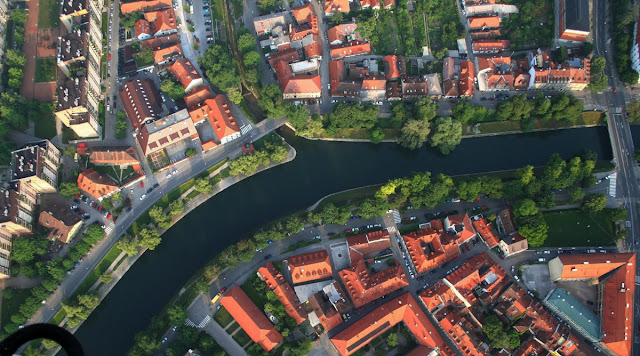RENEWAL OF THE RIVER MARGINS ljubljanica
Atelier Boris Podrecca. Ljubljana, Slovenia. 2011
The 20 April 2012 has failed the European Prize for Public Space seven European institutions convened biannually to recognize the best works in this continent.
This year the prize has been awarded in a shared way to actions for renewing Ljubljana along the river that runs through the central historic Slovenian town. The work was directed by the architect Boris Podrecca and which has involved a large team of other architects and specialists.
According to the press release provided by the organizers, from year 2004, the City of Ljubljana, in collaboration with several local companies, has undertaken an ambitious public investment of more than twenty million euros to improve a central space in the city that was in poor conditions. For a period of time remarkably short, coordinated several local professional teams in the development of a series of targeted interventions, realistic and achievable, but articulated within an urban system powerful.
El río Ljubljanica, as the guideline for the system, resume the role was given to him by extraordinary architect Josef Plecnik. Around waters, improving the quality of life outdoors encourage sociability and stimulate economic regeneration of the old city. Was, ultimately, to increase the attraction of the center to counter the negative trend to urban sprawl.
Deployed along more than two miles of river, intervention starts, upstream, at the point at which separate the original course and channel Ljubljanica Gruber. There, a new footbridge (2010) connects the Botanical Garden of the University of Ljubljana, the oldest scientific and educational institution in Slovenia, with the new Municipal Park Špica (2010), riparian green space tops the southern corner of the island on which the town is. The first three hundred meters from the left bank of the canal have been the subject of a landscape restoration to power while its natural character and accessibility.
It has been restored, also, Dique the Trnovo (2010), on the left bank of the river stretch, that, following seven hundred meters downstream, reaches the confluence with the Gradaščica, a tributary of the Ljubljanica. The meeting of this course minor Barjanka Avenue, main artery of access to the city, has been solved with a new bridge (2008), namesake of the road, and river park (2008), park's namesake. The new viaduct is neighbor Trnovo Bridge, Plečnik work and central district of the same name.
Aguas abajo part Ljubljanica, shortly after the mouth of Gradaščica, the banks are acquired on a more urban. There has restored the old bridge Hradecki (2011), and levees Krakovo (2010) The Break (2010), both on the left bank. The dam Breg offers some steps in the Plaza Nueva (Novi trg), also must be renewed. This is one of the oldest squares in the city, adjacent to the National and University Library, is also work Plečnik.
Five hundred feet in the direction of flow, still on the left bank, dam is Hribarjevo, with the square Dvorni, both restored shortly before this intervention. On the opposite bank, perpendicular to the dike Cankarjevo, está la calle Locksmith (2009), which leads to the Castle Hill and has also undergone restoration. From Triple Bridge, on the left bank, the dam is provided a pavilion Petkovškovo (2006) which looks out over the river with a cantilever stands to offer one of the best views of the Castle Hill. The new bridge Butcher (2010), exclusively pedestrian, connecting the center of the dam with the slack Petkovškovo that Plečnik up as market riverfront Tržnica. About four hundred meters downstream, intervention ends with the insertion of a new bridge Grain (2010), provided with a cantilevered gradería, connected to a floating pier at water level.
The renewal of the river Ljubljanica as it passes through the historic center of the Slovenian capital is the result of a collective effort, concentrating resources on specific operations and optimizing coordination between various promoters and authors, reflects the humanist dream and gives continuity Plečnik. The banks are now fully accessible, both in the longitudinal direction of their dams as in transverse relationship established with adjacent tissues. Become a unitary public space at the same time full of special places, transmitted to the historic river enough gravitational pull to counter the centrifugal forces of urban sprawl.
The result Award, explained by the Jury President, Josep Llinás


